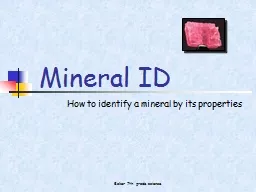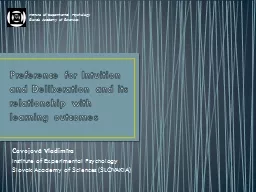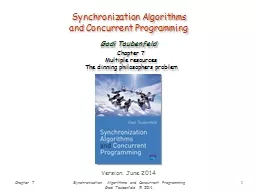PPT-FUN 2014: Highlights from the 7th International Conference on Fun with Algorithms
Author : lois-ondreau | Published Date : 2018-10-24
Michael Brand July 13 2014 Some words about fun Is a semiannual conference Is a biannual conference Occurs every two years Approximately Exercise 1 Complete the
Presentation Embed Code
Download Presentation
Download Presentation The PPT/PDF document "FUN 2014: Highlights from the 7th Intern..." is the property of its rightful owner. Permission is granted to download and print the materials on this website for personal, non-commercial use only, and to display it on your personal computer provided you do not modify the materials and that you retain all copyright notices contained in the materials. By downloading content from our website, you accept the terms of this agreement.
FUN 2014: Highlights from the 7th International Conference on Fun with Algorithms: Transcript
Download Rules Of Document
"FUN 2014: Highlights from the 7th International Conference on Fun with Algorithms"The content belongs to its owner. You may download and print it for personal use, without modification, and keep all copyright notices. By downloading, you agree to these terms.
Related Documents












![[eBOOK]-Software Engineering - ESEC/FSE \'99: 7th European Software Engineering Conference](https://thumbs.docslides.com/971444/ebook-software-engineering-esec-fse-99-7th-european-software-engineering-conference-held-jointly-with-the-7th-acm-sigsoft-symposium-on-the-foundations-lecture-notes-in-computer-science-1687.jpg)
![[PDF]-Software Engineering - ESEC/FSE \'99: 7th European Software Engineering Conference](https://thumbs.docslides.com/992373/pdf-software-engineering-esec-fse-99-7th-european-software-engineering-conference-held-jointly-with-the-7th-acm-sigsoft-symposium-on-the-foundations-lecture-notes-in-computer-science-1687.jpg)
